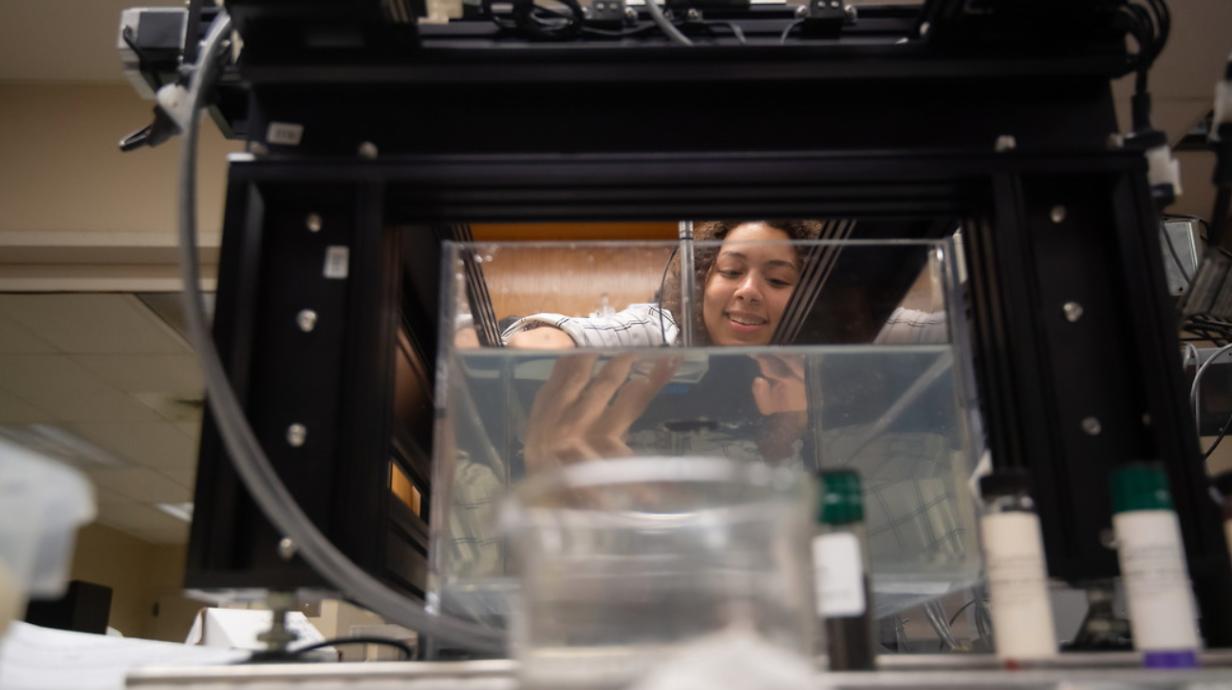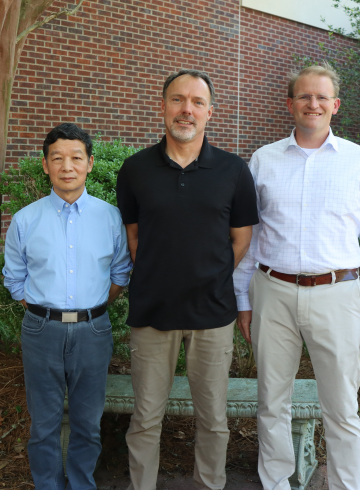A History of Innovation
Our work has had an undeniable influence on a diverse range of fields—from military and defense to environmental conservation and medical device development.

In October 1986, NCPA was established through an act of Congress with a mandate:
“to conduct and transfer scientific research into usable technology for government and commercial applications.”
This congressional action stemmed from the national prominence achieved by the Physical Acoustics Research Group at the University of Mississippi (PARGUM), a group of researchers in the Department of Physics and Astronomy, led by Henry E. “Hank” Bass, F. Douglas Shields, Lee N. Bolen, Roy T. Arnold, and Lawrence A. “Larry” Crum.
In the nearly 40 years since, NCPA has become a beacon of innovation, excellence, and leadership, continually pushing the boundaries of what is possible in the field of physical acoustics. Our work has led to the development and design of new technologies, methodologies and solutions for various industries.
Some of our milestone achievements include:
- Secured $283 million in funding from government and private sources.
- Filed over 15 U.S. patent applications and had nine active U.S. patents issued.
- Executed more than 75 technology transfer agreements and four license/option agreements.
- Awarded Ph.D. degrees to 35 students and involved more than 500 students in research projects.
- Boasted 11 fellows of the Acoustical Society of America.
- Contributed seven associate editors and one editor-in-chief to ASA journals.
- Published over 770 peer-reviewed journal articles.
A Culture of Collaboration
NCPA brings together an interdisciplinary expertise, encompassing researchers, engineers and academics, each committed to their specialized field while equally dedicated to collaboration across the center. By pooling diverse skills, NCPA is able to tackle challenges and drive meaningful innovations. It is not just about individual achievements but about collectively pushing the boundaries of the field towards groundbreaking discoveries and practical applications.
Innovations by NCPA
NCPA’s research and development spans a wide range of industries. Our team has developed solutions for counting catfish in commercial ponds, pioneering signal analysis methods for noise canceling headphones, establishing standards for acoustic absorption leading to accurate application of airport noise regulations, and patenting supersonic jet noise reduction technology. Here is a look at just a few projects that illustrate the breadth and depth of our work:
In 2019, NCPA principal scientist Vyacheslav “Slava” Aranchuk received a U.S. patent for the Laser Multi-Beam Differential Interferometric Sensor (LAMBDIS). This sensor system made it possible to detect tiny vibrations from a moving vehicle. Working with the Office of Naval Research, LAMBDIS allowed rapid detection of buried landmines with the vehicle moving at speeds of up to 8 mph. The LAMBDIS system can be implemented on any moving platform including drones. Market potential includes nondestructive testing, damage and corrosion detection, structural integrity assessment, and noise source identification.
Likun Zhang, associate professor of physics and astronomy, and Robert Lirette, a former Ole Miss doctoral student, developed an ultrasonic acoustic tweezer device that NASA launched to the International Space Station (ISS) for testing in 2022. The acoustic tweezers work by shaping sound waves into a beam that creates a small pocket within the fluid, allowing droplets to be captured and maneuvered without physical contact. This technology is potentially useful for managing fluids in space where traditional methods are impractical because of the lack of gravity.
Led by principal scientist Dr. Roger Waxler, NCPA researchers working with a grant from the National Oceanic and Atmospheric Administration have been able to detect and track tornadoes using infrasound – low-frequency sound waves inaudible to humans. This project aims to enhance tornado detection accuracy by observing the unique acoustic signals emitted by tornadoes. The researchers are studying the tornado sound sources with infrasound microphone arrays in Mississippi and Alabama. The goal is to enable real-time verification and path projection, significantly improving public safety and response times.
In collaboration with Tripler Army Medical Center and the University of Washington, NCPA researchers led by Dr. Joel Mobley developed the Remote Acoustic Hemostasis (RAH) device. This innovative technology integrates a therapeutic high-intensity focused ultrasound (HIFU) array with a diagnostic ultrasonic imaging probe. The device is designed for use in various care settings to control internal bleeding, particularly for patients with inaccessible hemorrhages requiring stabilization before evacuation. It also has potential applications in civilian trauma care and targeted drug delivery.
The infrasound group at the University of Mississippi's NCPA explored using microbarom signals – very low-frequency sounds generated by ocean waves – to study hurricanes. Their research demonstrated that microbarom signals are refracted by hurricane winds. This scientific finding could allow for remote, continuous monitoring of hurricane intensity. The group successfully deployed infrasound microphone arrays and confirmed that these signals could provide rapid, real-time insights into the internal dynamics of storms, offering a new tool for hurricane analysis.
NCPA scientists Dr. Joel Mobley, Dr. Wayne Prather, and Dr. Zhiqu Lu participated in a consortium funded by the U.S. Department of Energy to study the long-term stability of the canisters that store nuclear fuel. The NCPA work demonstrated ultrasonic (very high frequency waves) techniques to assess and monitor the structural health of these canisters. This is just one example of the utility of physical acoustics in non-destructive testing and evaluation of materials and structures.
Modern infrasound sensor development started at the NCPA with Dr. F. D. Shields and was later perfected by Dr. Carrick Talmadge. The technology development led to the leading commercially available sensor produced by Hyperion Technology Group, LLC., and used by research groups worldwide. In parallel, NCPA scientists led internationally renown studies of the science of infrasound propagation in the atmosphere. In recent years under the leadership of Dr. Roger Waxler, this research has led to the release of the NCPAprop software that is used by academic researchers, national laboratories, and technical experts around the world.
NCPA developed a unique but simple solution to reduce the extreme noise from supersonic jets like those on military aircraft. The solution originally patented by J. M. Seiner (U.S. Patents 7240493B2 and 7475550B2) features a series of lobe-shaped contoured panels used to form the exhaust nozzle for the jet engine. Working in collaboration with Combustion Research and Flow Technology, Inc., the aeroacoustics research group led by Dr. Nathan Murray worked to optimize the shape of the contoured panels. The culmination of the multi-year, Navy funded effort to maximize the benefit of Seiner's original concept concluded with a successful 3 dB reduction (about 30% lower) of the noise levels using a simple, single-part, retro-fit design with less than 1% impact to thrust and no impact to the aircraft systems or flight-deck operation. The research also developed tools for multi-objective aeroacoustic design optimization that have been used for many other applications.
Our Alumni
NCPA is dedicated to educating, training, and inspiring generations of acoustics researchers, developers, and innovators. Our students, graduate students, research assistants, engineers, and professors have gone on to lead and excel at renowned institutions, organizations, and universities worldwide.
Here are just a few of the places around the world where you can find NCPA alumni.










A Lasting Impact
"In my professional career, I have had many inventions in several different fields and have been issued more than 60 non-utility patents with another 50 more patent applications pending, but what I have found is every invention comes down to the physics behind it. And the principle of physics was what I learned at NCPA."
Mark Wang
CEO, GMEMS Technologies, Inc.

